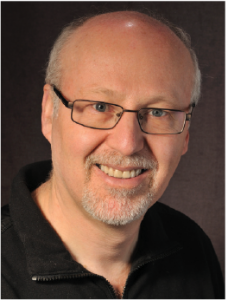Blog
-

Back to Basics: “The Final Element”. By Marshall Chasin, AuD
 19 Oct , 2015
The Final Element may sound like the title of a movie starring Bruce Willis (or was that The Fifth Element?), but this is all about that one last piece of the puzzle to optimize a hearing aid for music. The last several years have seen a remarkable improvement in a hearing aid’s ability to handle the higher level inputs associated with music.
19 Oct , 2015
The Final Element may sound like the title of a movie starring Bruce Willis (or was that The Fifth Element?), but this is all about that one last piece of the puzzle to optimize a hearing aid for music. The last several years have seen a remarkable improvement in a hearing aid’s ability to handle the higher level inputs associated with music.Whereas speech has sound levels on the order of 60-80 dB SPL, even quiet music can have levels on the order of 100-110 dB. Until recently, modern digital hearing aids have been playing “catch up” to the analog technology of the late 1980s and early 1990s. These old-style hearing aids were analog and, as such, did not have analog-to-digital (A/D) converters. Modern A/D converters are typically restricted to transduce inputs of only 90 dB to 95 dB SPL, resulting in poor fidelity when it comes to playing and listening to music. More on this can be found at www.Chasin.ca/distorted_
music. In the last several years, technologies have become available that have shifted up the maximum input that can be digitized through an A/D converter to over 110 dB SPL. These include, among others, the Live Music Plus technology from Bernafon, the Dream circuitry from Widex, and most recently, the North Platform from Unitron, and Venture Platform from Phonak. In these last two cases, the manufacturer has changed from a 16-bit architecture to a 24-bit one, thereby allowing a greater dynamic range and a lower noise floor. I would suspect that, in the near future, all hearing aid manufacturers will have resolved problems with the higher sound level inputs of music.
Yet one element—the final element—remains, and it is surprisingly very “low tech.” So low tech, in fact, that it was previously available but has been withdrawn from the marketplace: a single-channel hearing aid. Single-channel hearing aids have been shown to be less than optimal for speech, especially in noisy environments. The resulting signal-to-noise ratio (SNR) can be rather poor with single-channel broadband amplification. Multi-band compression has been the mainstay of hearing aids since the late 1980s with the advent of the K-AMP. However, speech is not music.
While typical SNRs for speech can be on the order of 0 dB, typical SNRs for music can be greater than +30 dB. The advantages of SNR improvement for multi-band compression with speech are not necessary when it comes to the higher sound levels that are typical of music.
For string-heavy music, such as classical music, a single-channel hearing aid is indeed the missing element. This is probably less so for hearing and playing woodwind music. However, given the impressively higher SNRs that are characteristic of music, a true single-channel hearing aid is a necessary requirement, which will have no downside for playing and/or listening to music.
Marshall Chasin, AuD.
Is an audiologist and director of research at the Musicians’ Clinics of Canada, Toronto. He has authored five books, including Hearing Loss in Musicians, The CIC Handbook, and Noise Control—A Primer, and serves on the editorial advisory board of HR. Dr Chasin has guest-edited three special editions of HR on music and hearing loss (August 2014, February 2009, and March 2006), as well as a special edition on hearing conservation (March 2008).





























































































































































































































































































































































































































































































































































































